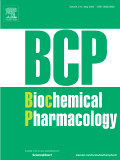“Cannabinoids have shown to reduce joint damage in animal models of arthritis and reduce matrix metalloproteinase expression in primary human osteoarthritic (OA) chondrocytes.
Chondrocytes from OA joints were shown to express a wide range of cannabinoid receptors even in degenerate tissues, demonstrating that these cells could respond to cannabinoids.
Cannabinoids designed to bind to receptors inhibiting the catabolic and pain pathways within the arthritic joint, while avoiding psychoactive effects, could provide potential arthritis therapies.
Cannabinoids were originally derived from the cannabis plant, Cannabis sativa, which has been used medicinally and recreationally for many years because of its anti-inflammatory, analgesic, and psychoactive properties.”






